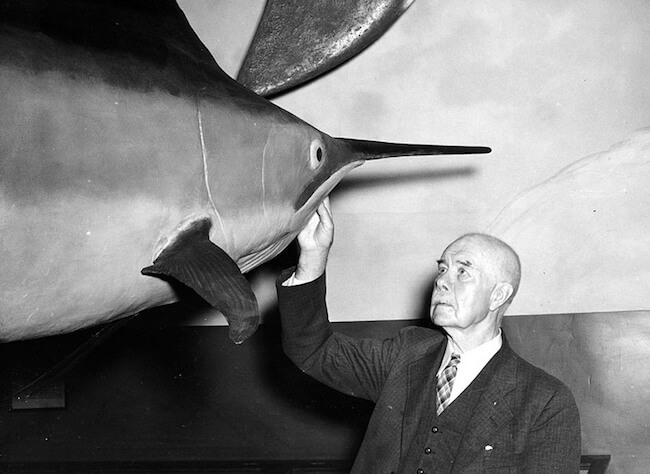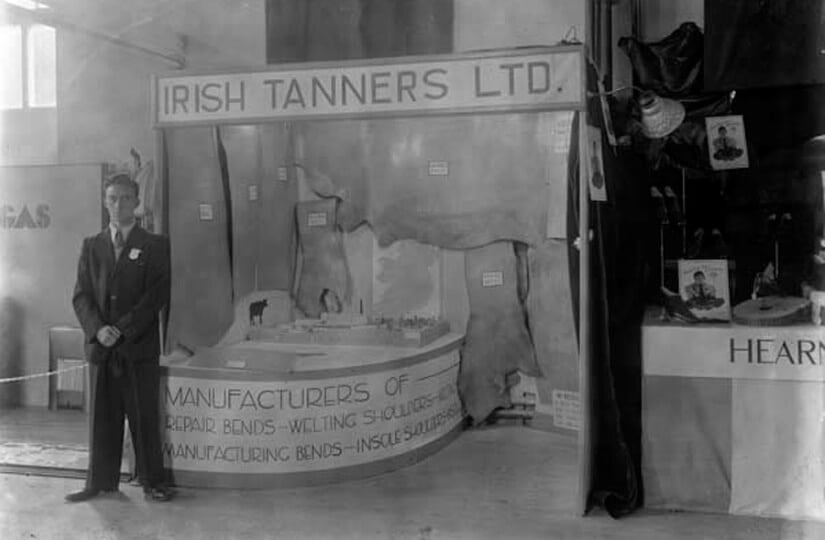How to Deal with Exhibitors at Conferences and Events
Attracting exhibitors to your event is hard. Making sure they remain happy in the run up to and on the day of the event is one of the biggest challenges faced as an event planner.
For many businesses and organisations, exhibitions are a big investment of time, money and resources. Exhibitors will therefore do all they can to ensure the conference is a success, which can result in them giving you a hard time. This guide is designed to give you insight into their needs so that you can better meet them as well as some more general tips on dealing with exhibitors.
Dealing with Exhibitors
We know that dealing with exhibitors can be one of the biggest headaches when it comes to running a conference or trade show. It doesn’t have to be this way though. We believe that by correctly identifying their needs and understanding the issues they face, you can take positive steps to minimise stress for all parties.
It all starts with putting yourself in their shoes. Exhibitors are spending a significant amount of time and money exhibiting at your event. They need to be able to demonstrate a clear return on investment (ROI) at the end of it – basically proving that all the hard work and resources paid off. In order to get a good ROI, they first have to be able to:
…capture the attention of tired and jaded delegates
in a short space of time
in an intensely competitive environment
and sell to them without them ever once feeling sold to…
It’s not an easy task.
As an event planner, you want to be able to guarantee that the right people spend time exploring the exhibition space and enable exhibitors and support them where possible. This then allows them to focus on making their stand look attractive and welcoming, and engaging with delegates.
Why your conference is right for them
Exhibitors will decide if your conference is a good fit for them by asking some key questions. Will their target audience be there? Will there be potential customers? Will it be worth it?
Usually, they will make this decision based on the quality of your event programme, the success of your past events along with the strength of your proposed marketing plan.
It’s not good enough to say you hope to attract 1000 visitors if you don’t have a clear plan to ensure this happens. Communicating a summary of your marketing plan can be a compelling tool in getting exhibitors to sign up.
In your initial contact with potential exhibitors, you should highlight the line-up, your event USPs as well as share testimonials from exhibitors at previous events. They will be looking to exhibit at a show that gives them the best chances of meeting their targets whether this is sales, new customers or sign-ups. Make sure you sell your event and really leverage any successes from previous shows.
Attendance
You need to attract the right people to your conference. There’s a good chance that these people will also be highly relevant to your exhibitors. It’s therefore important that you get key people in the industry to attend.
Unsurprisingly, exhibitors will want to know as much as they can before the event about potential customers. In particular, any insights you can provide on them. Exhibitors will carry out their own research on attendees so that they can effectively target them on the day.
You should release the list of registered attendees to exhibitors as soon as you have it – this may be something that you charge for. These lists usually include an attendee’s name, their company and an address.
Money and ROI
Deciding to exhibit at a trade show or conference can be a big decision, especially for smaller organisations and businesses. Exhibitions are often a significant investment in terms of time and money.
Businesses that exhibit will have clear targets and will be solely focussed on ROI. Exhibitors want to meet, connect and sell to as many potential customers as possible. After the event they will be analysing the number of contacts, leads and sales to get an accurate picture on the ROI of the event
Price
When it comes to pricing, it is important to be communicate clearly around the costs and what is included in the price. For example, you should let exhibitors know if the price includes full access tickets to the event, conference or wider show. If you are explicit about the number of tickets, this avoids grumbles further down the line.
If the price of the pitch is non-negotiable then state this clearly in any communications with exhibitors. This will prevent any unnecessary bartering and uncomfortable exchanges.
Tip: It can help some businesses if you allow them to pay in instalments.
Exhibitor Registration
You want to make all of the processes around your conference as smooth as possible. Registration is one process that should be painless. Do some research on the best registration platforms and be sure to test it out yourself. You are looking for one that is super user-friendly and intuitive to use.
Communicating with Exhibitors
As an event planner, you know how important communication is but it’s worth reiterating in relation to exhibitors.
From the start, make it clear exactly what information you need from the exhibitors and when, setting deadlines and sending out email chasers. Maintaining communication with email updates and interacting on social media is very important. By keeping regular contact, you make it easier for exhibitors to ask you questions and for you to answer them, avoiding any misunderstandings. You can use an FAQs page on your event website to deal with the common questions.
If there are any changes to the schedule or anything that may impact the exhibitors communicate with them as soon as possible.
On the day of the event, you want to be fully visible, interacting with the exhibitors and offering them support. You can add value by helping them network and make connections.
Exhibitor Manual
One of the key part of your communication should be an Exhibitor Manual – this document helps prepare the exhibitor prepare for the exhibition, sharing key information and guidelines. It covers everything from health and safety to contact details, advertising to directions to the venue. You can also include all forms that need to be filled out. Make it available as a PDF that you can email out and also have on your website.
Marketing
We have already mentioned the importance of having an effective marketing plan to both your event and to exhibitors. It’s even more important that you execute it.
Being as up-to-date and active as possible with your marketing is key. If you have an event website, then you should have a section to showcase the exhibitors. Make sure you have the correct logo and their preferred website address. Update it regularly and make sure it looks good.
Help Exhibitors Maximise Exposure
Exhibitors will use a variety of marketing tools to maximise their presence online in the build-up to the show. They will be trying to create a buzz around their attendance. You should help them out by sending over relevant logos, images and marketing material related to the event. As well as this you should connect and interact with them on social media including sharing their messages. Share details of the event’s social media accounts including the conference hashtag well in advance of the event. You can also add exhibitors to a dedicated twitter list to make it easier to engage with them on the platform.
The Space
Exhibitors want the best possible pitch for their money and a space that will help them convert visitors to customers. It goes without saying that you will have hired a venue that meets the requirements of your event. You now need to turn your attention to making the most of the space for attendees and exhibitors alike.
Setting Up the Space
Most exhibitors will want access to the space the day before the conference in order to set-up. Make sure this is possible with the venue and communicate the details clearly with the exhibitors. You should encourage them to get there as early as possible so they have plenty of time to set up their stand and prepare.
One of the biggest gripes for exhibitors is unloading (and loading) heavy equipment and transporting it to the exhibition space. Make sure you share information on where they can park when unloading gear and what the most efficient route is into the space.
Floor Plans and Exhibitor Layout
As an event planner you need to accurately and strategically plan the layout of the exhibition space. You should do so with the overall design of the event in mind – how will people travel between the sessions and the exhibition space? And then around the exhibition space itself?
Tools for Creating Floor Plans
There is a range of software and tools available that allow you can to design your floor plans such as Showplans, All Seated (free), and Planning Pod.
Important Point: Although it is tempting to increase the number of exhibitors, be very wary of the impact this will have on the exhibition space.
Attendee Flow
When designing your floor plan, you should consider how to optimise for exhibitor exposure and utilise the flow of attendees around the space. The best way to do this is to consider each element of the space and where it is best placed. You want to avoid any bottlenecks and obstructions at all costs. Considering the desired flow of attendees around the space is the hardest part of the job.
You should have a clear strategy in place that will ensure delegates enter the space as well as work their way around it. First impressions are important so you want to make the space inviting, but then you also want to think of ways to draw attendees to the far reaches of the space so no exhibitor is ignored. You could locate big exhibitors at the back, especially those with attractive stands and props so that delegates travel the whole of the space.
Having refreshments in the exhibition space is a great way of drawing people in. You should think of other ways you can direct attendees to the exhibition space. One way to increase footfall is by scheduling regular breaks throughout the day.
The Pitch
Meeting Requirements
Exhibitors will want to have the best possible pitch. They want their stand to be located in a way that guarantees maximum traffic as well as a beneficial environment for talking to potential customers.
Visibility
Exhibitors want as much visibility as they can get – some will be prepared to pay more for a better position. Bear this in mind.
In terms of exhibitor stands, they will look to enhance their pitch in a number of different and increasingly original ways. They could use everything from the latest technology to fun activities to some very comfy seats to encourage people to visit. Find out in advance their exact requirements so that you can accommodate their requests.
Once they have been designated a pitch, provide the exhibitor with as much information as possible including the following:
- A floor plan and diagram of their pitch including the location of lighting, power sockets
- Nearby exhibitors
- Traffic estimates – a good opportunity to manage expectations
Tip: Once you provide the exhibitor with the exact dimensions of their pitch, suggest to them that they map it out to scale before visiting the venue. This way they can get an idea of the amount of space they have to play with and can experiment with layouts.

Photograph via State Archives of North Carolina on Flickr
Equipment and Requirements
Many exhibitors will do all they can to attract attendees to their stand. This can include everything from offering free massages to demos to interactive games. Find out exactly what your exhibitors need in terms of equipment for their stand well in advance. Be prepared for the addition of carpet, furniture, additional lighting, props, audio and visual equipment, computers, and a large variety of other tools.
Technology
If you are using any data scanners or event mobile apps then you should provide exhibitors with training so that they can get the most out of the technology. By getting exhibitors involved you also benefit with better quality in-app content and more overall engagement with the platform.
Feedback
Once the show is over, you should actively encourage exhibitors to provide feedback on their experience of the event. Any issues or suggestions raised should be taken on board when organising your next show. Happy exhibitors will keep on coming back.
20 Bedford Way
Located in the heart of London in leafy Bloomsbury, 20 Bedford Way benefits from amazing transport links as well as the latest events equipment. Jeffery Hall and Crush Hall are often used in conjunction with our Logan Hall conference space for the ideal exhibition space. Our events team are also on hand to help you with any aspect of venue management. For more information contact us on 020 7612 6143.
Header Image: Salesman at the Irish Tanners Ltd. exhibition stall 1945 via National Library of Ireland on Flickr




